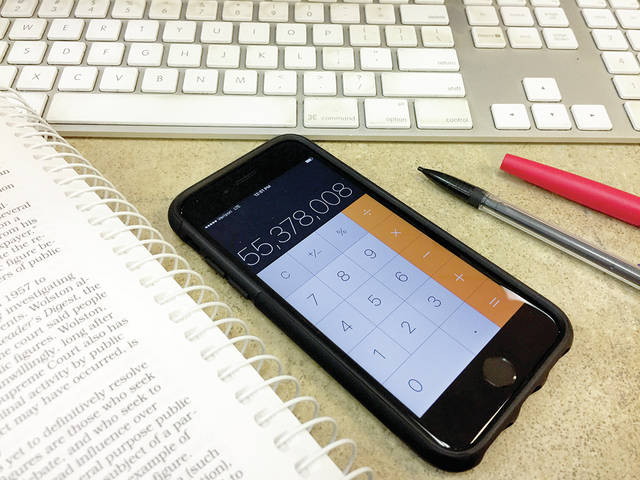LIHUE — Cellphones are banned in most U.S. schools, but new data shows them steadily gaining acceptance as administrators bow to parents’ wishes to keep tabs on their kids and teachers find ways to work them into lessons.
“Since we have Pk-12 students at our school, we have varying levels of usage in the classroom,” said Nathaniel Evslin, director of Technology and Deeper Learning at Island School in Lihue. “In our elementary school, the students are not to have cell phones at all. In the middle school, the students are able to use them before and after school, but not during the school day. In our high school, the students can use them during breaks as well.”
The percentage of K-12 public schools that prohibited cellphone use was about 66 percent in 2015-16, down from more than 90 percent in 2009-10, according to data from a survey conducted by the National Center for Education Statistics. Among high schools, the shift over the same period was especially striking — dropping from 80 percent with bans to just 35 percent.
“In the middle and high school, it is up to our teachers if they want to allow the students to use them for educational purposes,” Evslin said. “For example, there is a fun quiz game called Kahoot where teachers can create online quiz competitions for the students and they can participate using their devices.”
Students might download a dictionary app for English or use Google Translate in foreign language classes. Other apps, like Kahoot!, connect to the classroom’s smart board and allow students to compete in educational trivia.
“Using a product called Google Cardboard, teachers can take advantage of virtual field trips where the students can be immersed in a bedroom in Syria and hear a student there talk about their experience,” Evslin said.
All Island School students in grades six through 12 have a computer to use during the day. The school issues 6 through 8 graders Chromebooks, and 9 through 12 graders bring their own computers. Cell phones are an easy substitute for students to access all of their work, papers and other school-related files, according to Evslin.
Island School teachers post all of the students assignments online and will even receive assignments digitally through Google Apps on the MyVoyager program.
“These devices are a part of our lives now, and there are so many ways to use them in the classroom that it would be a disadvantage to the student to never use it,” Evslin said. “On the other hand they can be a huge distraction, so we leave it up to the teachers and the way they manage their classrooms whether or not a phone can be used.”
The nation’s largest school system, New York City, is among those that have abandoned strict bans, which had some students paying $1 a day to store phones in specialty trucks parked nearby before heading into school.
Mayor Bill de Blasio fulfilled a campaign pledge when he lifted the ban in 2015, saying it would help parents stay in touch with their children. Phones have offered a lifeline between students and the outside world during recent school emergencies.
Still some schools continue to ban the devices, while other policies allow teachers to decide whether students can use phones in their classroom.
According to Waimea High School’s Student Handbook, all cell phones and other electronic devices will be automatically confiscated if used during class time, unless teacher approved for academic purposes. Kauai High School’s practices also remind teachers to tell students to put their cell phones away when they walk into the classroom.
Cellphones can create distractions, and some teachers have seen an increase in cheating and texting during class.
According to media productions teacher, Kevin Matsunaga, Chiefess Kamakahelei Middle School was one of the island’s first schools to allow cell phones during non-instructional times at school — recess, lunch, and before or after school. The school has students and parents sign a form indicating they are aware of the guidelines and consequences.
“This year we gave each student a Chromebook to use 24/7, and now our teachers are thinking of going back to the electronics policy to possibly change it so that smart phones aren’t allowed during the day,” Matsunaga said. “It’s a tough decision to make and it’s something we need to look at more closely and also get input from the students before making any decision.”
He likes the school’s current policy, since it allows teachers to tailor it to their needs. Some teachers do not allow cell phones to be used at all, while other teachers encourage it.
“We did see referrals on campus drop when we first instituted this years ago,”Matsunaga said. “For some, cell phones allow students to have devices that are in many ways much more powerful than Chromebooks. Smart phones can take photos, shoot and edit video, and use apps to stay organized. Others find it a distraction as some students can’t keep their hands off of them.”
•••
The Associated Press contributed to this report.


